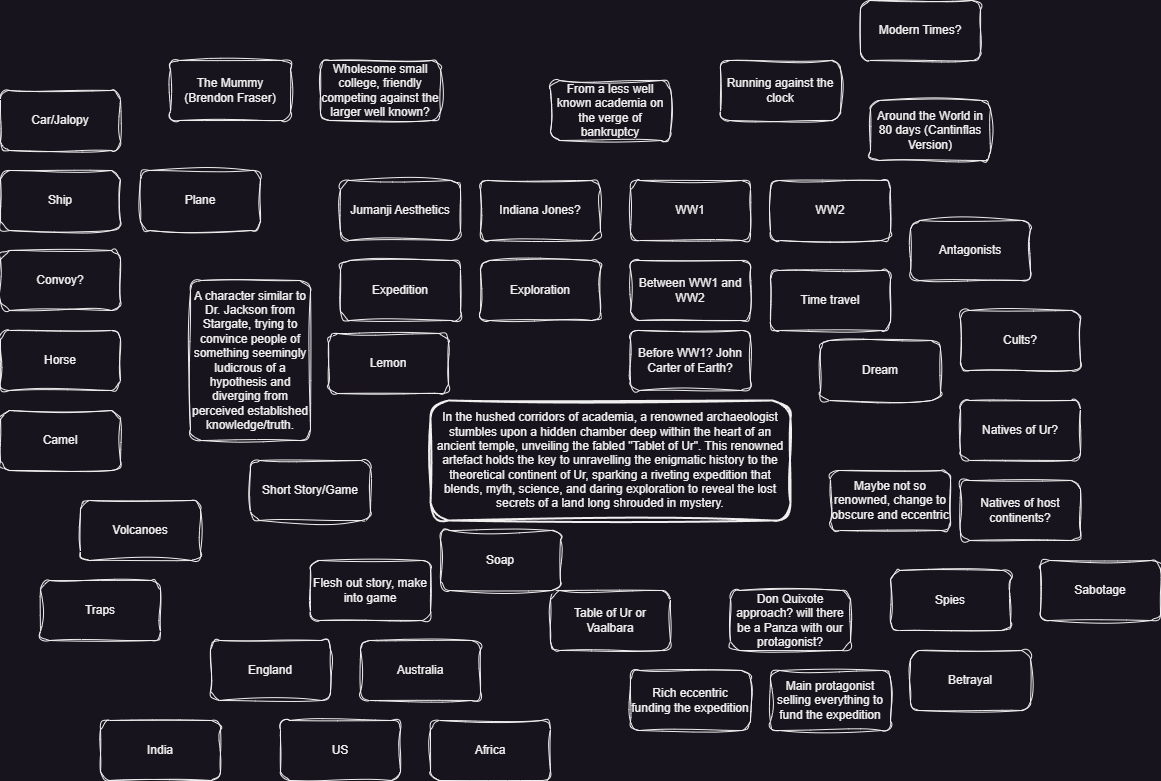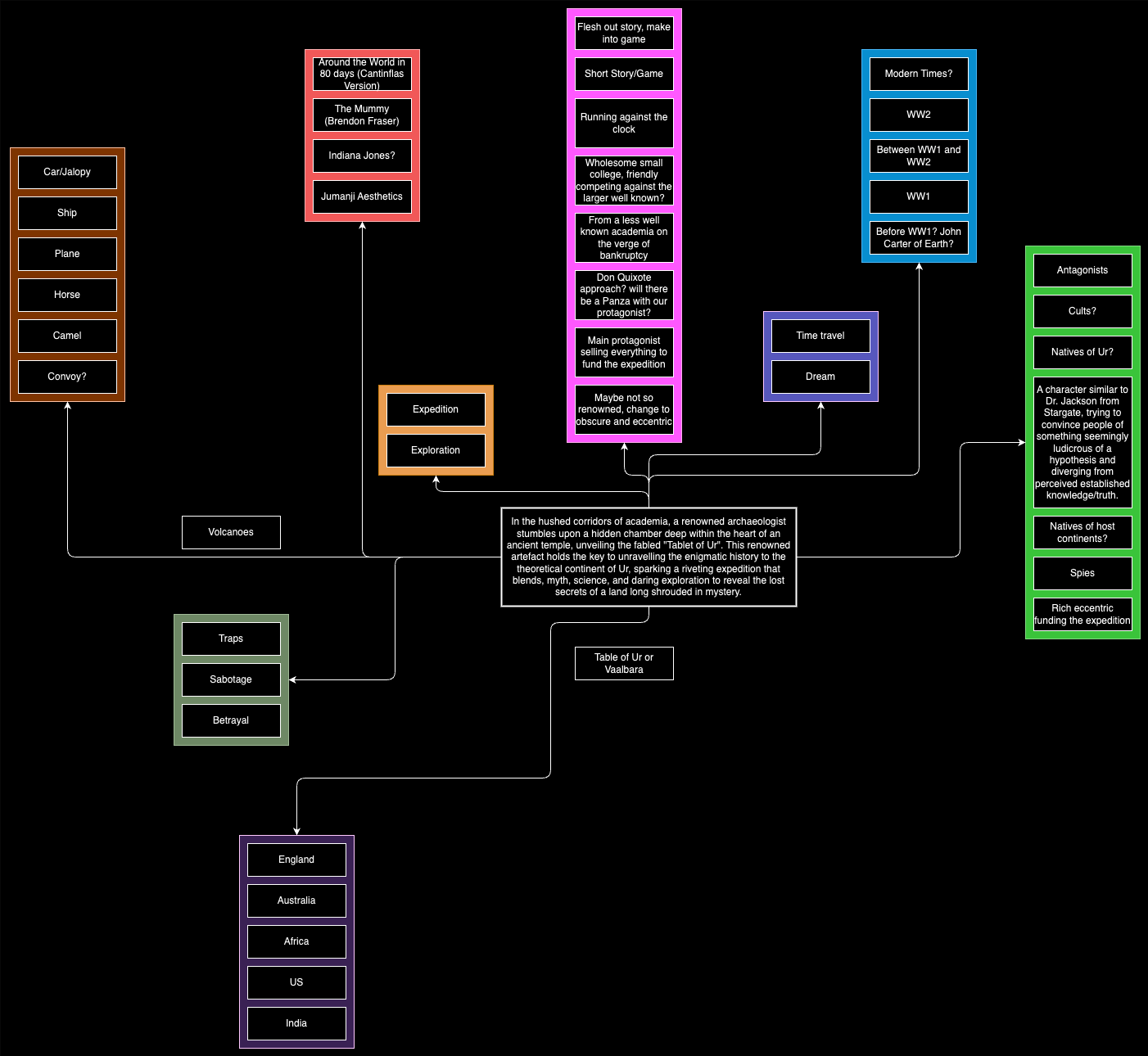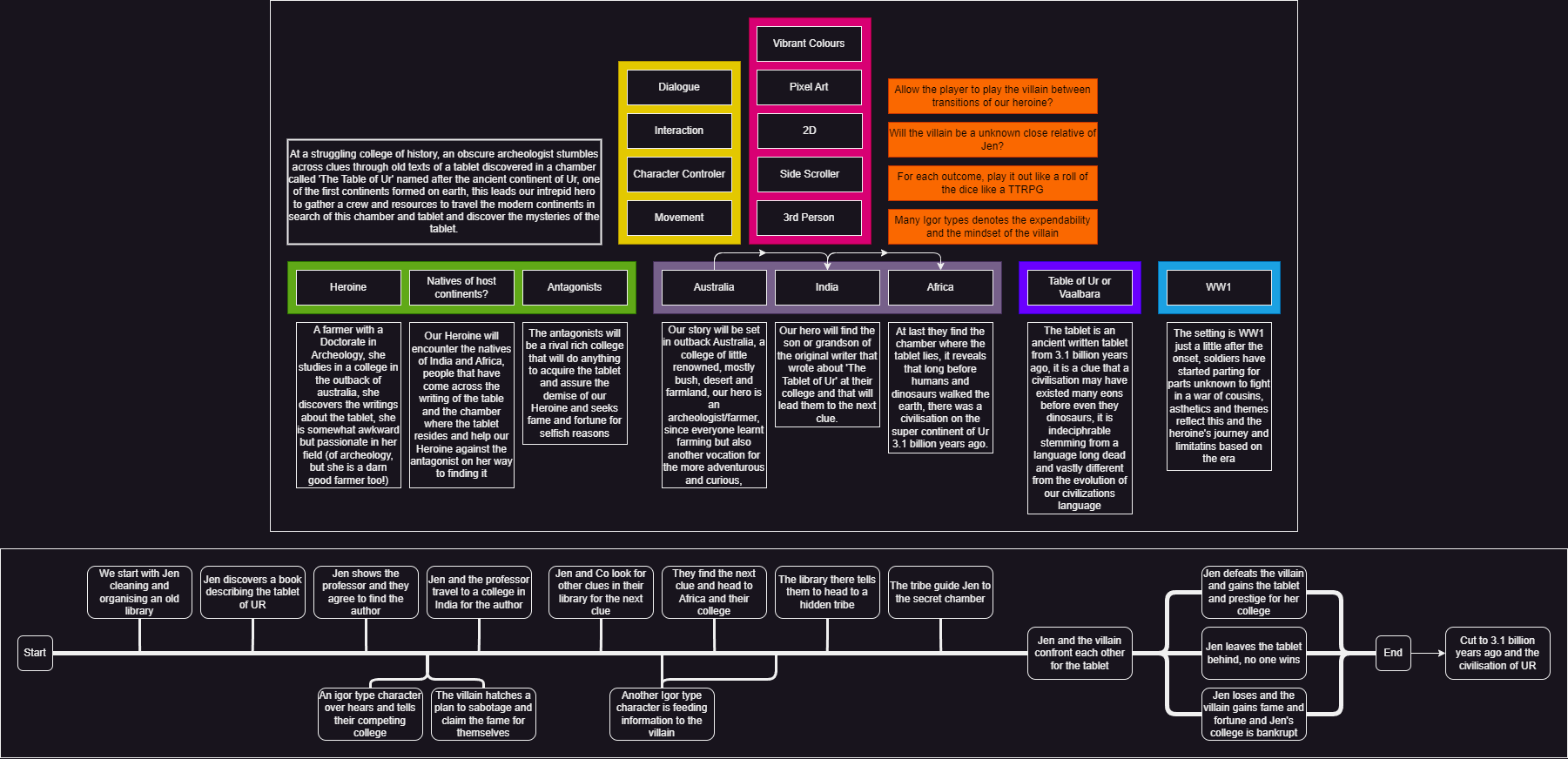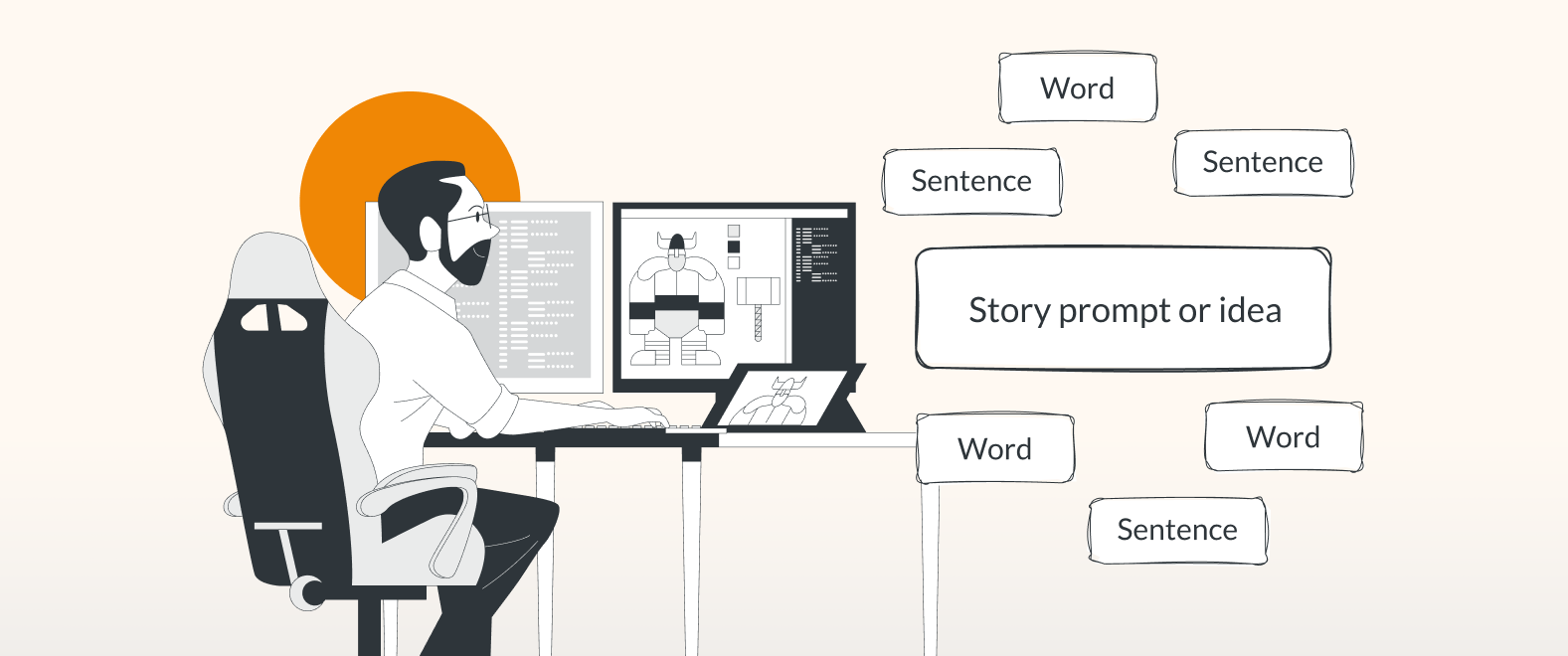Andrew Phillip Gonzalez is Co-Founder of Confused Wizards and a dedicated game designer, with a distinctive flair for storytelling.
Specializing in narrative and level design, he crafts immersive narratives to captivate players. Beyond his passion for game design, Andrew is an avid film enthusiast, weaving cinematic elements into his innovative projects.
In this blogpost series, he will be taking us on a walkthrough of creative storytelling in game design from start to finish, using draw.io.
You can find out more about his work here:
Introduction
In my approach to game design, creativity flows like a torrential river. It surges with unbridled energy, carving new pathways as it rushes ahead. This river is the lifeblood of our craft, birthing innovative ideas and ground-breaking experiences. But, like any mighty river, it can be wild, unpredictable, and chaotic.
Emphasizing the Creative Chaos
This is a journey that most game designers know well and if you didn’t, spoiler alert, it’s chaotic! We celebrate the chaos of game ideation, where ideas bubble up like geysers and concepts collide like celestial bodies. This chaotic phase is where the magic begins, but it’s also where things can get, well, a bit messy.
Here is where draw.io enters stage right, I start with a file called Untitled Diagram.drawio

Last thing on my mind is a file name until something takes shape later on.
The Importance of Structure
Chaos can fuel the creative spark, structure can serve as the guiding hand to shape raw ideas into tangible forms. As a game designer, I must embrace both sides of this creative coin. I will emphasize the importance of structure and a well-organized approach in game ideation as a counterbalance to the beginning of the chaos.
Embracing the Chaos
The Initial Stages
The brainstorming stage. Here, there are no rules, no judgments, only a canvas waiting to be painted with the wildest of ideas. Start at the end, start with a lowly character, or even a colour or anything that comes to mind, it’s a time for creativity to run free, unburdened, undisciplined and unplanned.
I can start with an object or a character and grow from there, whether it is a haunted mug of mouldy coffee (ew! Don’t think of the smell! Or do?), the protagonist, villain or even a minion.
I started with an overall concept based on an article I read about a theoretical supercontinent of Earth called Ur from 3.5 billion years ago for this journey.
Using Visual Representations
Visual representation is key to my process. At the beginning there are notes; words, phrases, illustrations that have no logical flow… Yet! But right then and there I don’t care (Yet!) all these moments of frenetic writing, one idea after the next and disjointed as they may be, I use diagrams, cells, blocks, or formless texts (text without borders/margins or in a cell) in an open draw.io diagram and start creating a cloud of random cells and a vague story with all the aforementioned notes (sometimes I’ll add lemon or soap forgetting it is not a shopping list but it doesn’t matter!)

A word cloud centred around a story prompt, concept or idea.
Benefits of Free-Flowing Brainstorm
But why embrace chaos at all? The answer lies in its unpredictability. It’s in this chaos that I find unexpected gems—ideas we might have missed in the more structured approach. The free-flowing brainstorm opens doors to innovation, pushing me to think outside of the box and more to the “what-ifs” (what if my character did this, what if we explored that, what if I bought lime instead?) pushing beyond my creative boundaries and habits.
In the chaos I begin to see patterns begin to form, something tangible, hidden gems, and potential for an idea to become something greater than the sum of all its disjointed parts.
It’s a process that always helps me to grow creatively and imaginatively.
Organizing the Chaos
Transitioning to Order
Yet, like a chef with all sorts of ingredients (I really need to finish my shopping list), there comes a time when we must transition from chaos to order. This transition is where the magic truly happens, as ideas find their place in the grand kitchen of game design.
Before was where the fun began, and here is where the magic can be realised, where we put all or most of the pieces together. The transition where ideas find their place.
Structured Concepts
Exploring how to structure those initial, wild ideas into a coherent game concept. We introduce the concept of order without stifling creativity, a delicate dance of structure and freedom.
Now, it’s all about giving structure to those brilliant, if not slightly mad, brainwaves of mine, yours, ours, without squashing the creative spark of course!
At the time I use what’s called an affinity diagram, this diagram brings ideas together into their natural relationships, things that seem to make sense grouped together.

A type of affinity diagram, categorizing ideas that seem to flow together or relate to each other.
draw.io: My Creative Ally
Throughout these steps, draw.io has been my toolset for this journey, from an untitled file to put all my disjointed ideas like a notepad, to a now-named file called “Tablet of Ur.drawio”. The seas have become calmer now as the game ideas have been taken from chaos to a rough shape.
At this point I have made a very rough outline of the game with timeline of the story and characters – it is rough and incomplete, but I can see that there is something there taking shape.

Refined the core story, added basic ideas to characters, gameplay, aesthetics and events in the form of a timeline.
Andy Outro
Once you have started to organise your ideas into a cohesive brainstorm, it’s time to focus on who will star in this story.
Join me in my next blogpost where I delve into the realm of character development, and show you how to craft unforgettable characters who will be carefully woven into your story.
draw.io Outro
We’ll be following Andy’s story in the following weeks, covering the following topics:
- From Chaos to Clarity: Conceptualizing Your Short Game
- Crafting Memorable Characters: From Chaos to Clarity
- Refining Story Plots and Mechanics for Your Short Game
- Game Design’s Chaos Compass: draw.io
Last Updated on February 27, 2024 by Admin

